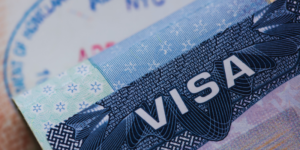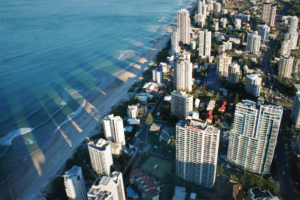Canada’s Express Entry system is one of the most popular immigration pathways for skilled workers seeking permanent residency. It is a points-based system designed to attract individuals who can contribute to the Canadian economy. In this blog, we’ll provide an in-depth look at the Express Entry system, including its components, eligibility criteria, and tips for increasing your chances of success.
Understanding the Express Entry System
The Express Entry system manages applications for three federal economic immigration programs:
Federal Skilled Worker Program (FSWP)
This program is for skilled workers with foreign work experience who meet specific education, language ability, and work experience requirements.
Federal Skilled Trades Program (FSTP)
The FSTP is for skilled workers qualified in a skilled trade. Applicants must have a job offer or a certificate of qualification in their trade issued by a Canadian authority.
Canadian Experience Class (CEC)
The CEC is for skilled workers with Canadian work experience. Applicants must have gained work experience in Canada while on temporary status.
Eligibility Criteria
Minimum Requirements
Each program under the Express Entry system has its own set of minimum requirements related to work experience, education, and language proficiency. Meeting these requirements is essential to enter the Express Entry pool.
Comprehensive Ranking System (CRS) Score
The Comprehensive Ranking System (CRS) is a points-based system used to assess and rank candidates in the Express Entry pool. Points are awarded based on factors such as age, education, work experience, language ability, and adaptability. The higher your CRS score, the better your chances of receiving an Invitation to Apply (ITA) for permanent residency.
Language Proficiency
All Express Entry candidates must prove their language proficiency in English or French. Approved language tests include IELTS, CELPIP (for English), and TEF (for French). Higher language scores can significantly boost your CRS score.
Educational Credential Assessment (ECA)
If you have foreign education, you must obtain an Educational Credential Assessment (ECA) to verify that your degree, diploma, or certificate is equivalent to a Canadian one. ECAs are performed by designated organizations such as WES, CES, and ICAS.
Work Experience
Your work experience must be in a skilled occupation classified under the National Occupational Classification (NOC) system. Both Canadian and foreign work experience can be considered, but they must be relevant and recent.
Application Process
Step 1: Create an Express Entry Profile
The first step is to create an online Express Entry profile. You’ll need to provide detailed information about your skills, work experience, language ability, education, and other personal details. Based on this information, you’ll be assigned a CRS score and entered into the Express Entry pool.
Step 2: Improve Your CRS Score
While in the pool, you can take steps to improve your CRS score. This might include retaking language tests to achieve higher scores, gaining additional work experience, or obtaining a job offer or provincial nomination.
Step 3: Receive an Invitation to Apply (ITA)
The Canadian government conducts regular draws from the Express Entry pool, inviting candidates with the highest CRS scores to apply for permanent residency. If you receive an ITA, you’ll have 60 days to submit a complete application for permanent residency.
Step 4: Submit Your Application
Once you receive an ITA, you must submit your application for permanent residency along with all required supporting documents. This includes police certificates, medical exams, proof of funds, and any other documents specified in your ITA.
Step 5: Application Processing and Decision
After submitting your application, it will be reviewed by Immigration, Refugees and Citizenship Canada (IRCC). Processing times vary, but the target is to process most applications within six months. During this time, you may be asked to provide additional information or attend an interview.
Step 6: Receive Confirmation of Permanent Residence (COPR)
If your application is approved, you’ll receive a Confirmation of Permanent Residence (COPR) and a permanent resident visa, if applicable. You’ll need to complete your landing process to officially become a Canadian permanent resident.
Tips for Success
Maximize Your CRS Score
Focus on improving factors that can increase your CRS score, such as language proficiency, additional education, or gaining more work experience. Even small improvements can make a significant difference.
Seek a Provincial Nomination
Provincial Nominee Programs (PNPs) can provide a significant boost to your CRS score. Research and apply to PNPs that align with your skills and experience. A provincial nomination can add 600 points to your CRS score, virtually guaranteeing an ITA.
Obtain a Job Offer
A valid job offer from a Canadian employer can increase your CRS score. Use job search platforms, networking, and recruitment agencies to find job opportunities in Canada.
Stay Informed
Keep up-to-date with changes to the Express Entry system, including CRS score cutoffs and program-specific requirements. This will help you stay competitive and make informed decisions throughout the process.
Prepare Thoroughly
Ensure that all your documents are accurate, complete, and well-organized. Inaccurate or missing information can delay processing or lead to refusal of your application.
Conclusion
The Canadian Express Entry system offers a streamlined and efficient pathway to permanent residency for skilled workers. By understanding the eligibility criteria, application process, and strategies to maximize your CRS score, you can enhance your chances of success. With careful preparation and determination, you can achieve your goal of becoming a permanent resident of Canada and enjoy the numerous opportunities and high quality of life it offers.




